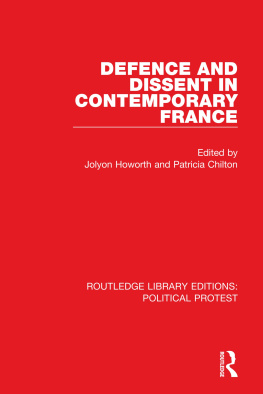REBUILDING THE LOCAL LANDSCAPE
To my wife, Joanne
ETC UK
This book is an ETC UK project. ETC UK is a not for profit company established in North Shields, England. It is part of the ETC International Foundation Group, with headquarters in Leusden, The Netherlands. There are sister offices in other countries throughout the world. ETC UK has been in operation for 10 years and has handled 200 projects. ETC Foundation and its sister companies specialise in sustainable development with a strong emphasis on participation by local people in project design and development. This emphasis on participation leads to an end use, bottom up approach to development. Sectoral expertise in low external input agriculture, environment and conservation, land use planning, social forestry, energy and evaluation of humanitarian assistance. ETC UK is particularly involved in environmental management and impact assessment. Its services are usually requested for innovative policy making and project design, particularly in circumstances of significant social change. ETC UKs main objective is to encourage and support local initiatives which aim to build sustainable development.
Chris Howorth works as a consultant for ETC UK, specialising in natural resource management and sustainable development. He has worked on projects in many countries in east, west and southern Africa. He has also lectured on environment and development in Newcastle University and the University of Northumbria.
Rebuilding the Local Landscape
Environmental management in Burkina Faso
CHRIS HOWORTH
First published 1999 by Ashgate Publishing
Reissued 2018 by Routledge
2 Park Square, Milton Park, Abingdon, Oxon, OX14 4RN
711 Third Avenue, New York, NY 10017, USA
Routledge is an imprint of the Taylor & Francis Group, an informa business
Copyright Chris Howorth 1999
All rights reserved. No part of this book may be reprinted or reproduced or utilised in any form or by any electronic, mechanical, or other means, now known or hereafter invented, including photocopying and recording, or in any information storage or retrieval system, without permission in writing from the publishers.
Notice:
Product or corporate names may be trademarks or registered trademarks, and are used only for identification and explanation without intent to infringe.
Publishers Note
The publisher has gone to great lengths to ensure the quality of this reprint but points out that some imperfections in the original copies may be apparent.
Disclaimer
The publisher has made every effort to trace copyright holders and welcomes correspondence from those they have been unable to contact.
A Library of Congress record exists under LC control number: 98074636
ISBN 13: 978-0-367-00005-9 (hbk)
ISBN 13: 978-0-367-00007-3 (pbk)
ISBN 13: 978-0-429-44504-0 (ebk)
Contents
Africas environmental challenge too often produced meta-narratives that have little to do with the lives and livelihoods of Africans. Frequently viewed as large scale rural factories initially by colonisers then transnational corporations and now by an African elite of large scale landowners, the environment offered a productive Utopia for modern production exports and individual wealth beckoned. The contrasting meta-narrative was that of doom and gloom a Malthusian nightmare resplendent with overcrowded slums, polluted rivers, collapsing subsistence production and soil erosion. Neither, of course is correct but both meta-narratives still have their promoters.
Of late there has been a willingness to try and understand what peasant farmers are designing and building in their local landscapes. Extreme physical events, such as the 1980s Sahelian drought, allow insight into environmental management strategies in subsistence production systems. Response to drought and recovery towards a development agenda show a mosaic of environmental management strategies that build on past cultural norms but acknowledge opportunities and constraints in a new environment.
Chris Howorths work details such an experience in Burkina Faso. Building on ecological and farming systems research in three villages he examines changing environmental management strategies including changing frameworks of customary land law as the land resource becomes scarce. The emerging mosaics described defy the uniformity of a modernisation process without denying the benefits of modernity. Potential ethnic conflict is muted by building inter and intra village practices that are broadly commensual.
This work, originally produced as his doctoral dissertation, was based on Chris Howorths fieldwork as a UNAIS technical assistant. It combines academic rigour with a commitment to participatory development action; abstraction with action. There is much to recommend in such an approach, not least as the chances for detailed African fieldwork decline. More interaction between universities and field agencies is necessary if the richness of produced landscapes is to be understood. On a more local note I am pleased that Chris Howorth chose to complete his work at the University of Northumbria building capacity with others notably Sam Moyo for work on the political economy of African environmental management. Where he has led, others are certain to follow.
Phil OKeefe
Newcastle upon Tyne
September 1998
The first part of this book explores the idea that the peasant mode of production1 has shown itself to be efficient in providing subsistence to the household and ensuring family survival. It is also argued here that development can occur within the peasant mode of production, as it has always done. Historically, the peasantry of Africa have been highly mobile and highly adaptive in creating lifescapes which are mobile in both time and place and it is these which make the peasant mode of production so effective. The resilience of the peasantry is due to its proven ability to survive and prosper over millennia. Far from being an outdated mode of production, it is constantly modernising itself, assimilating what global developments offer, to make it a more effective system.
As African landscapes continue to be studied in detail, new findings emphasise the creative and productive human influence, rather than the negative impacts of humans. As Tiffen et al (1994) showed in part of Kenya, more people meant less erosion: Fairhead and Leach (1996) showed that local people were the reason behind the increasing presence of forests in parts of Guinea. This study attempts to show that the presence of three times as many people in one area, compared to 15 years ago, contributes to a vibrant economy and a productively managed environment.
To understand how people manage their local landscapes, it is important to understand the rationale and driving forces behind the peasant mode of production in an historical context.
Physical Geography
Burkina Faso is a land locked country in the West African Sahel region, north of Ghana, between the Sahara desert and the Gulf of Guinea, south of the loop of the Niger River. It is located on a plateau that rises gently from an elevation of 800 feet in the southwest to 1150 feet in the northeast (Atampugr, 1994:4). It covers 274,200 square kilometres and shares borders with Mali, Cte DIvoire, Niger, Ghana, Benin and Togo (Figure 1.1). The country has generally poor soil with many areas being infertile semi-desert. The climate is hot and dry, with average annual rainfall 6501150 mm but less than 250 mm in the north. Water is therefore scarce in many parts of the country and, where it is available (for example, in the Black Volta River valley), infestations of river blindness or sleeping sickness prevent its use for agriculture. There are three distinct seasons: warm and dry from November to March; hot and dry, from March to May; and hot and wet, from June to October.







